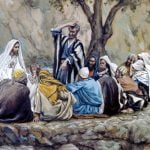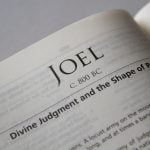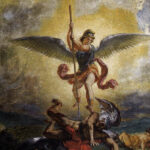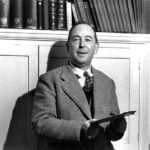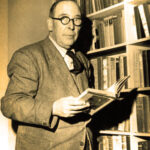
Bible Study Helps: 1 & 2 Peter, and Jude
These three letters (along with John’s letters – see my next article in this series) form the penultimate portion of the New Testament, with only Revelation left to round things off. The short epistle of Jude (just 25 verses), is often paired with 2 Peter as it contains many similarities. And as many scholars and commentators note, these two books are among the most neglected NT letters.
So let me first discuss 1 Peter, and then look at the other two. Perhaps the one main theme found throughout this epistle is that of suffering – indeed, all five chapters of 1 Peter discuss this issue. As I. Howard Marshall puts it, “The number of uses of suffer and suffering in this letter is out of all proportion to its size”.

Or as Wayne Grudem comments, there is “one verse which, perhaps better than all others in the letter, summarizes these concerns: ‘Therefore let those who suffer according to God’s will do right and entrust their souls to a faithful Creator’ (1 Pet. 4:19).”
Fee and Stuart put it this way:
What propels this letter from beginning to end is their suffering. Peter’s concern is that they understand their suffering in the larger context of God’s saving purposes. Thus the strong emphasis on the work of the Triune God. God, the author of salvation, has both chosen and called them to be his people in the world. Suffering may therefore be understood as in keeping with God’s higher purposes (his will); yet Christ’s death and resurrection have made their final salvation altogether certain so that they live in hope.
Other themes found in the letter include that of living in a hostile world, perseverance, hope, holiness, new life in Christ, and divine election. As to the last topic – and without wishing to start yet another war here – I like what R. C. Sproul says about this in his expository commentary:
Christians who seek to be biblical in their thinking must have a doctrine of election and of predestination. These concepts were not invented by Augustine in his debate with Pelagius, or by Luther in his debate with Erasmus, or by Calvin in his debate with Pigius, or by Edwards in his debate with Chubb. These concepts of election and predestination are found in the text of Scripture. If you really want to be biblical as a Christian, it is incumbent upon you to hold to the biblical doctrine of predestination and of election and not some other construction.
As to 2 Peter and Jude, as mentioned, these are often neglected books, and there are a lot of similarities found in both. As to the first point, part of this has to do with the nature of the books and what they deal with. They seem a bit gloomy and negative – not exactly happy and uplifting. Douglas Moo puts it this way:
Most of us don’t like to focus on the negative. And maybe that’s why 2 Peter would probably come toward the last of most people’s list of “favorite books in the New Testament.” Both these letters – though Jude more than 2 Peter – have a lot of negative things to say. Jude and Peter do not tell us much about the wonderful blessings that God has given his people; but they say a great deal about the dangerous and damnable practices and teachings of certain false teachers.
What exactly this false teaching was all about we are not fully clear on, since the two writers do not describe it in any detail. Concerning the similarities between the books, what we specifically are referring to is all the common ground found between 2 Peter 2 and Jude. Here are just some of the many clear examples of this:
-false teachers condemned: Jude 4; 2 Pet. 2:3
-denial of the sovereign Lord: Jude 4; 2 Pet. 2:1
-angels and judgment: Jude 6; 2 Pet. 2:4
-Sodom and Gomorrah as an example of judgment: Jude 7; 2 Pet. 2:6
The obvious question that arises here is why these striking similarities? More specifically, who has borrowed from whom? It is hard to give a precise answer to the second question. Some argue that Jude borrowed from Peter. Some say Peter edits and adapts Jude. The various critical commentaries will spend a lot of time on this discussion.
Donald Hagner in his quite useful 2012 NT introduction says this, in part, about the debate:
As many as nineteen of Jude’s total twenty-five verses find full or partial parallels in 2 Peter. . . . We may quickly put aside other possible explanations of the similarities, such as common dependence on an unknown third source and common authorship. But if we have here an instance of literary dependence, who depends on whom? A number of factors point to the priority of Jude and to 2 Peter’s dependence on Jude…
He offers six such factors, and then says this: “Although none of these arguments is conclusive in itself, together they do make it probable that 2 Peter is the later of the two documents and dependent on Jude.” Most NT scholars tend to run with that approach.
It may be fitting to bring this discussion to a close with one of the great passages found in Jude’s short letter – his doxology as found in the last two verses: “Now unto him that is able to keep you from falling, and to present you faultless before the presence of his glory with exceeding joy, To the only wise God our Saviour, be glory and majesty, dominion and power, both now and ever. Amen.”
1&2 Peter and Jude expository commentaries
Doriani, Daniel, 1 Peter (REC, 2014)
Helm, David, 1 & 2 Peter and Jude (PTW, 2008)
Lloyd-Jones, Martyn, Expository Sermons on 2 Peter (Banner of Truth, 1983)
Sproul, R. C., 1-2 Peter (Crossway, 2011)
1&2 Peter and Jude critical commentaries
Bateman, Herbert, Jude (EEC, 2015, 2017)
Bauckham, Richard, Jude, 2 Peter (WBC, 1983)
Best, Ernest, First Peter (NCBC, 1971)
Blum, Edwin, 1, 2 Peter (EBC, 1981)
Blum, Edwin, Jude (EBC, 1981)
Clowney, Edmund, The Message of 1 Peter (BST, 1989)
Davids, Peter, The First Epistle of Peter (NICNT, 1990)
Davids, Peter, The Letters of 2 Peter & Jude (PNTC, 2006)
Goppelt, Leonhard, A Commentary on 1 Peter (Eerdmans, 1978, 1993)
Green, Gene, Jude & 2 Peter (BECNT, 2008)
Green, Joel, 1 Peter (THNTC, 2007)
Grudem, Wayne, First Peter (TNTC, 1988)
Hillyer, Norman, 1 and 2 Peter, Jude (NIBC, 1992)
Jobes, Karen, 1 Peter (BECNT, 2005)
Lucas, Dick and Christopher Green, The Message of 2 Peter & Jude (BST, 1995)
McKnight, Scot, 1 Peter (NIVAC, 1996)
Marshall, I. Marshall, 1 Peter (IVPNTC, 1991)
Michaels, J. Ramsey, First Peter (WBC, 1988)
Moo, Douglas, 2 Peter, Jude (NIVAC, 1996)
Neyrey, Jerome, 2 Peter, Jude (AB, 1993)
Schreiner, Thomas, 1, 2 Peter, Jude (NAC, 2003)
Selwyn, Edward Gordon, The First Epistle of St Peter (Macmillan, 1946, 1955)
Stibbs, Alan, The First Epistle General of Peter (TNTC, 1959)
Witherington, Ben, A Socio-Rhetorical Commentary on 1-2 Peter (2008)
Wright, N. T., The Early Christian Letters: James, Peter, John, and Judah (WJK, 2011)
As to my most recommended volumes, perhaps run with Baukham, Davids, G. Green, Jobes and Schreiner.
Happy study and happy reading.
(Australians can find most of these volumes at Koorong Books.)
[1207 words]

